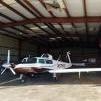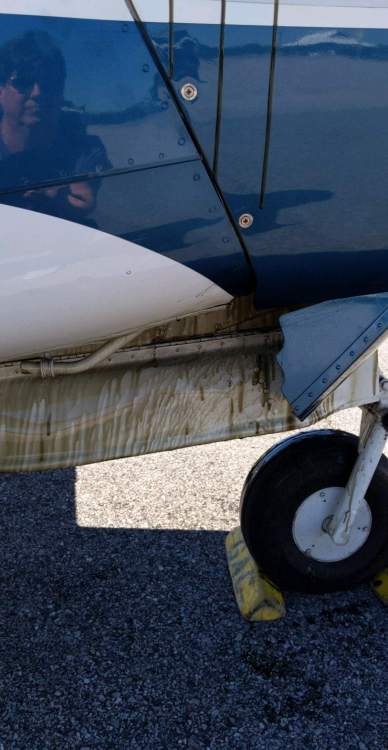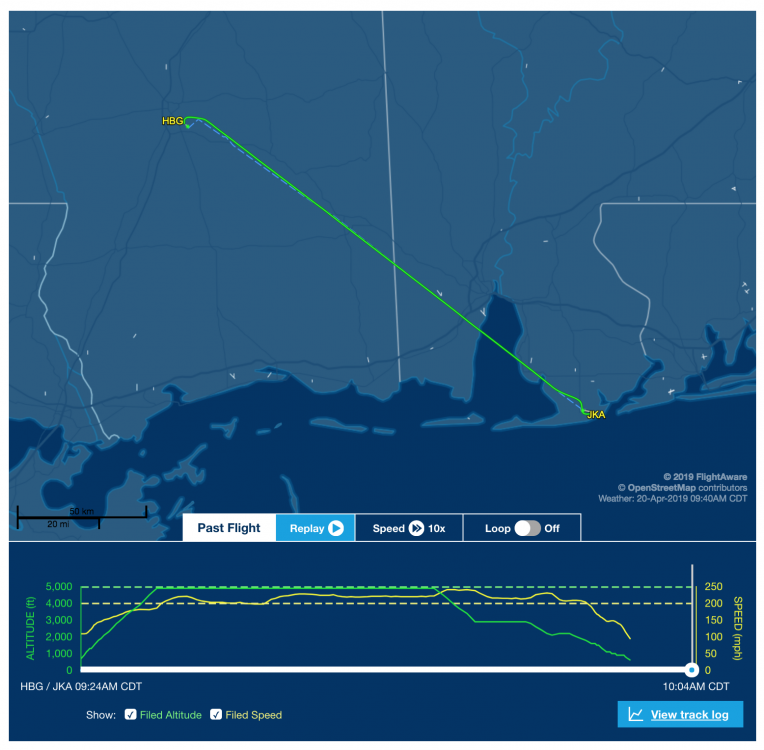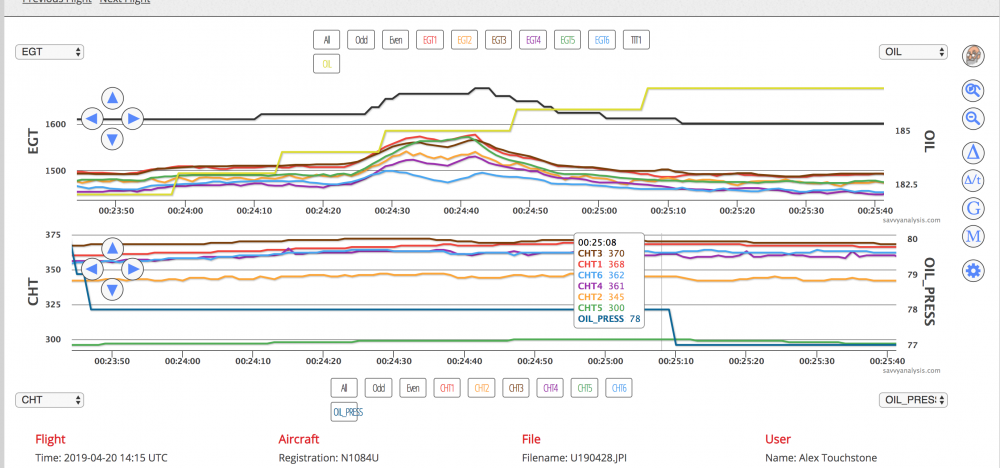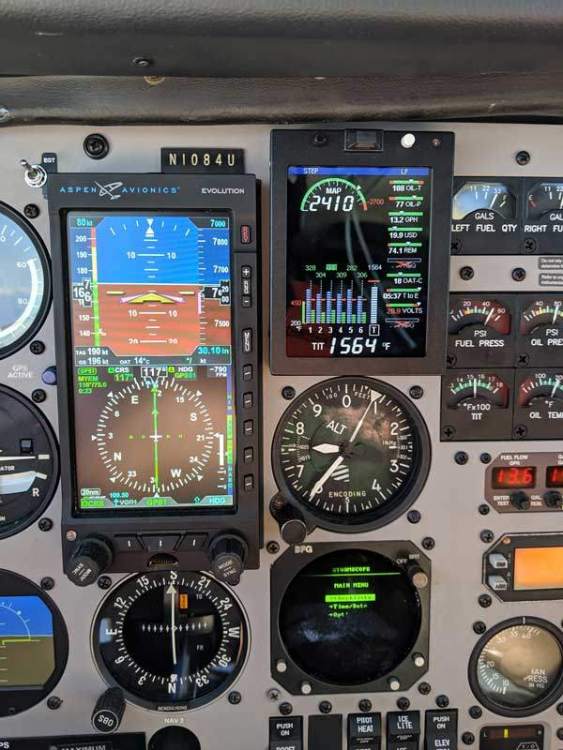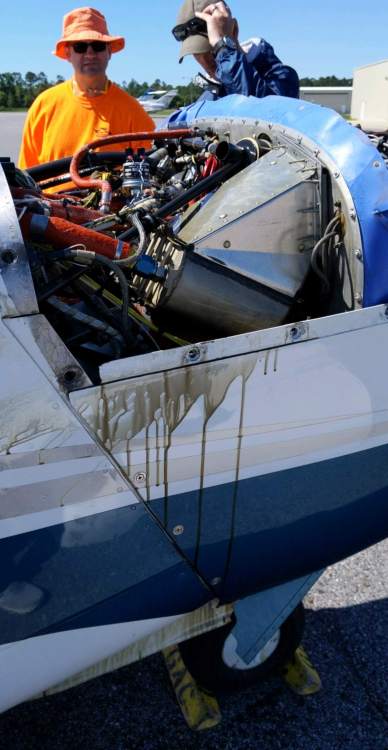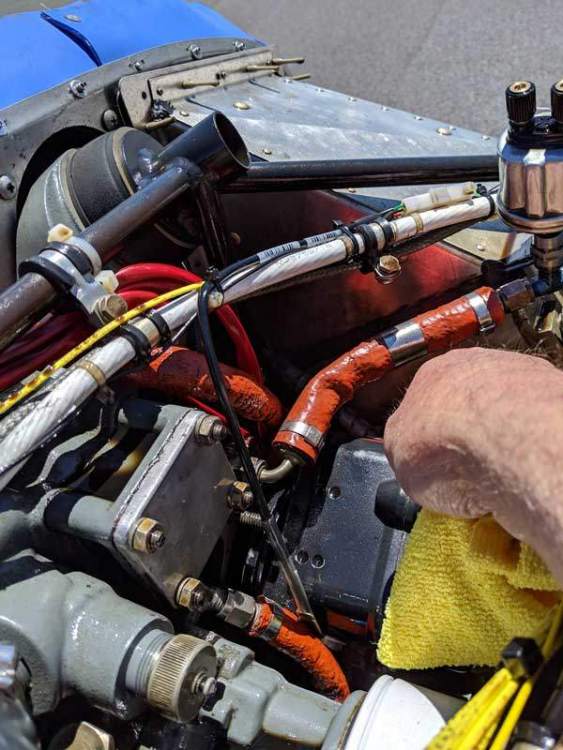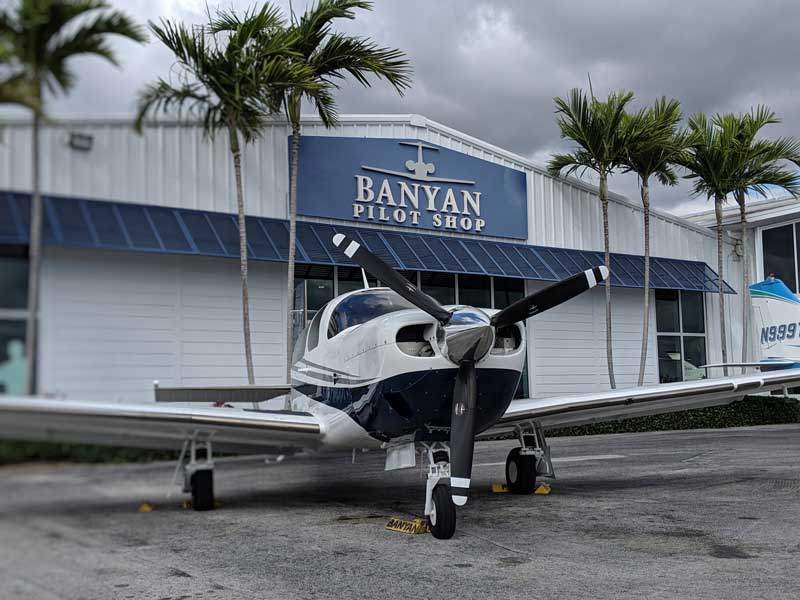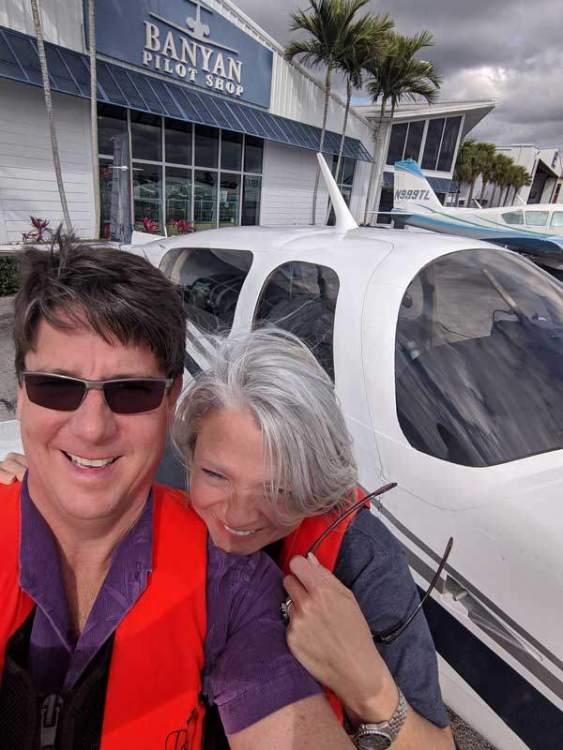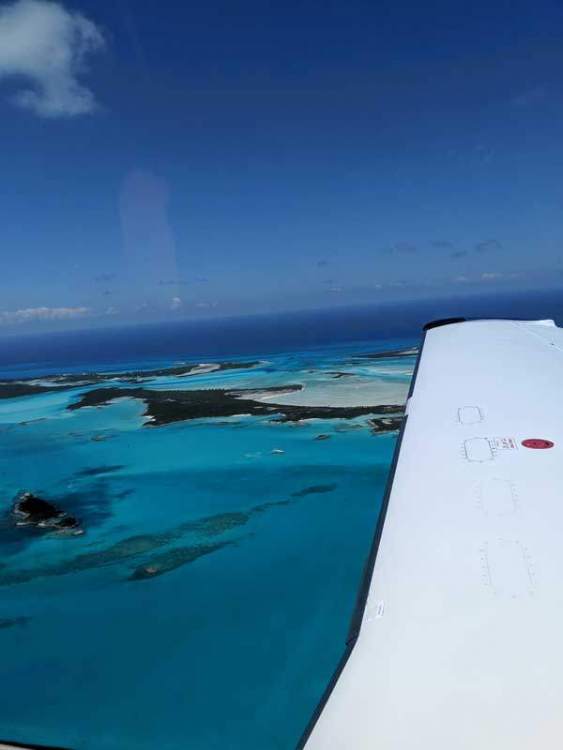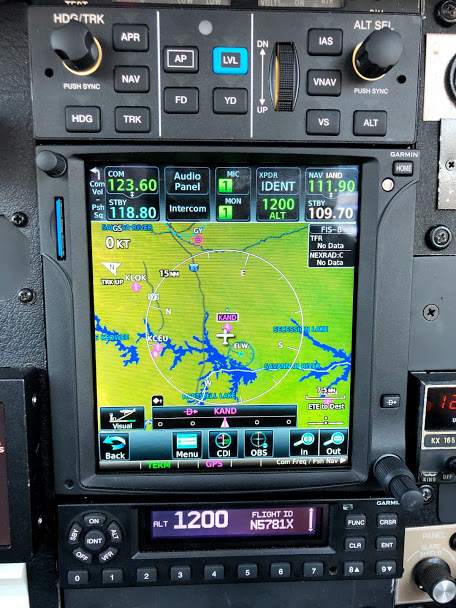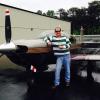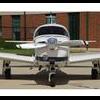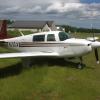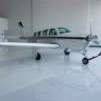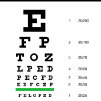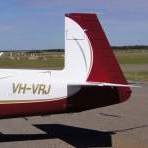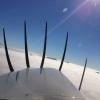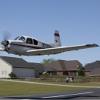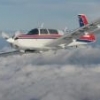Leaderboard
Popular Content
Showing content with the highest reputation on 05/09/2019 in all areas
-
First, I apologize in advance for the length of this post. Here's a teaser image to entice you to read on: There is just no brief way of telling this story and I think it is one worth sharing. Like so many others on this forum, I gleefully took delivery on my new to me "forever ours" Mooney last fall, a '95 Bravo. Since then, I have been diligent about learning all I can about proper maintenance and monitoring of the condition of the engine and other components. Once all of the more urgent issues were addressed (overhaul of the exhaust system and turbo, new cylinder, TKS troubleshooting) the time finally came for installation of a JPI EDM 830 and a trip over water to the Bahamas. The planning for both started months ago (selecting and ordering life vests, a PLB, stobes, planning our day trips, learning about eAPIS and customs documents, applying for a Customs sticker and FCC radio license, etc). About two weeks before my wife and I were planning to depart, I purchased the EDM 830 and dropped the plane off at my local IA / A&P's shop for installation and an oil change. The day before we left, I picked up the plane, test flew it around the pattern, and I discovered that one of the CHT and EGT probes were swapped which was quickly remedied. The mechanic also informed me at that time that the MP sensor was defective out of the box and JPI would send another one. I would have to return for its installation later - no big deal. I then flew the plane again back to my home base in the neighboring town without incident. Our plan was to leave the next morning and to fly from KHBG via HEVVN intersection to KFXE, a flight that we could easily make in about 3 hours 45 minutes. That night, my wife commented that she had intended to ask her parents to bring our snorkel gear home from their condo in Gulf Shores Alabama but that she forgot. She begged me to make a stop the next morning on the way down to FL to pick them up and I agreed. Again, no big deal, Gulf Shores is on the way and we have a car stationed at the airport KJKA. The next morning, after a thorough pre-flight (oil level at 8 quarts), we took off for our 28 minute flight to KJKA. Here is the flight log from Flight Aware: The flight was smooth and uneventful until about the last 4 minutes, right about the time you see the turn due south to set up for landing. During my descent, partly because my JPI 830 was brand new, I was somewhat fixated on it during this flight so I was literally looking at it when I noticed a jump in the TIT to about 1675 degrees. Here is the graph from SavvyAnalysis from that timeframe (minus the MP because of the faulty sensor): At the time, I advanced the mixture to bring the TIT down and refocused on setting up for a safe landing. I kept an eye on the JPI and I did not see anything else of concern. BTW, I had mine mounted right beside my Aspen 1000 pro at the sacrifice of the stock VSI: We exited the airplane, and I was shocked to see oil all over the place! No, there was absolutely none on the windshield, though. Needless to say, I called my AI. To his credit, he immediately hopped into his own plane (a Mooney) and flew down with tools to investigate. This is what we discovered: The right magneto was loose...literally. Again, to my AI's credit, he inspected everything very thoroughly, apologized profusely, and re-installed the mag while cleaning up copious amounts of oil. It took 5 quarts to bring the level back to 8 quarts so I narrowly missed the teardown requirement! We test flew the aircraft without incident. After a long discussion with my wife, we agreed that we would continue on the next morning to Apalachacola then Ft. Lauderdale, monitoring closely along the way. We did so without further incident. We overnighted at Banyan and continued to Governors Harbor the next day: It truly was a trip of a lifetime! I have asked myself many times what I could have done differently and what lessons there are in this experience. So far this is what I have arrived at: 1. It is not prudent to take a trip away from home base right after maintenance. 2. The more post-maintenance inspection the better. 3. When the monitor shows an anomaly, take it very seriously. 4. Give the person who made an error an opportunity to make it right. 5. Distraction is a dangerous thing (I'll elaborate on this on in a subsequent post). I hope that this PIREP elicits some good discussion around MIF (Maintenance Induced Failure) and that additional lessons will be brought forth. I truly appreciate this forum and I hope to meet some of you at Oshkosh this year (my first year to participate in the caravan!). Fly Safe, Alex11 points
-
She's very adventurous so her attitude was positive the whole time. She kept reminding me how fortuitous or was that she insisted we stop in Gulf Shores. Had that not happened, we probably would have run out of oil and we might have been faced with an off airport landing... She's also starting flight lessons soon! What a cool thing! Sent from my Pixel 3 XL using Tapatalk5 points
-
Minor update. The cylinder is with Jewell Aviation. I called this afternoon and Sam answered. He happened to be working on it when I called. He said nothing was wrong except that the valve guide must've gotten some debris (or just carbon buildup) in it and that the valve stem was quite worn. So he is going to replace both the guide and the valve and that will be all it takes. At least, I believe he said he would replace the guide; I know he said he'd replace the valve, so maybe he's just reaming/grinding the guide. Sam did mention that the wobble test would have revealed a problem with this valve. Oh, and on pushrods: he said you generally get to use the same length rod that was originally there, especially when you both service the guide and replace the valve...that's where I think he must be just reaming/grinding the guide but replacing the valve. The combination gets you back to where you started, more or less, in terms of pushrod length. He said the cylinder itself looks very good, especially for 1450 hours. No cracks, nothing. He asked if I wanted new rings and suggested that I do so given the hours on this cylinder. I agreed, and asked him to mount the piston back in the cylinder before he ships it back to me. Sure thing, he said, and that was that.3 points
-
It’s strange we are talking about this. i just attempted to balance a Fellow MS drivers Mooney yesterday, an had something happen that had never happened to be before in 14yrs an several 100 Propellers. Balance started at .83 ips an balanced down to .07 ips in 4 runs an a verify run. Bring the spectrum down that much I would expect the Driver to be able to tell a real HUGE difference..... WRONG!!! Said it is shaking more(or different) now. Should Be Hearing Back From Chadwick-Helmuth Tomorrow on this situation. Now to the OP question: When you have issues that having you moving weights all over, basically working around the entire arch of the Propeller, it’s been my experience the propeller needs to be Re-Static Balanced, Or the Hub has been over services with grease(Hartzell), Or the Red-Oil Level inside the hub is Low(McCauley). Any of the 3 will create a Balance issue. Without a good a Static Balance, it won’t ever Dynamic Balance. When a Balance machine starts giving a Tech conflicted information, it’s time to stop. You have to understand where the machine gets it’s info from. Comes from the accelerometer on top of the engine, an if there is no repeatability then something is changing with every start.3 points
-
Looks like the 500 got officially approved on the J/K per the Garmin website! Still flawless performance after clocking in about 15 hours! One other really cool feature worth noting is that when you are on alt hold and change the baro setting, the AP goes to the new accurate altitude. Pretty neat!3 points
-
Shout out and special thank you to @Cody Stallings for some great advice today. Mooneyspace is blessed to have him and I know where I will be sending my prop for service in the near future !2 points
-
It's here! A functional GFC500 in my Mooney 231 that I got to fly behind today! I wanted to share my first impressions on the new AP, although I will likely be adding on after this weekend (read more flight time). Before it went in, my 231 was equipped with a KFC150 with altitude preselect and VS mode which was tied into my G5 HSI and GTN750- no slouch of a setup to begin with. As such, my comparison baseline is against the KFC150. Today was a great day for playing- CAVU, nice and bumpy below 5000 or so and then smooth above. I flew it about 2 hours, mostly dropping the test pilot off at CLT to get home. (He's a MS-er, so he's A-OK in my book) We were able to do some maneuvers, demonstrations and approaches. First off, the ergonomics and annunciations on the AP control panel and the G5 are intuitive and took about 30 minutes to get used to. Button press pressure is just right- not too hard, but not too soft for turbulence. The annunciator colors on the G5 are also pretty intuitive. I really liked the TOGA feature- you're all set for a wings-level climb right out of the get go. Preselecting the heading, altitude bug and VS are simple and get you set up for a nice instrument departure should you need it. I unfortunately forgot to test the coupled go around- one of the things I was super excited for, more to come on that. The VS mode is so good at holding rate it's scary, even in turbulence. IAS climbs in turbulence were OK as the pitch hunted for airspeed a little, but was awesome in the smooth air above. I'm sure I'll find it immensely useful in the summer when wanting to keep the engine cool in the climb- it's HOT in SC. 1,000 and 200 foot alerts are standard and really nice; you can also set the bug to minimums on an approach and it will aurally and visually alert you- yes, basic but still nice. Altitude hold? None of this 10 -20 feet off BS. It holds right on the money even in turbulence- it's digital after all and computers are binary. I didn't get to play with VNAV yet unfortunately. For lateral guidance, the heading mode exhibits smooth and consistent rates in addition to very good rolls in/out of turns. Nav mode tied to a GPS? Native GPSS? Yep. intercepts and course holding is where you would expect it- rock solid and on point. in turbulence, the roll axis doesn't wallow all over the place like a rate-based AP, that thing is rock solid like the 150 was- a very comfortable ride in bumps. ESP- I got to try out the envelope protection in the areas of of slow speed and over-bank angle. the stall protection is very cool as you can really feel it pushing the stick below about 70 kts or so, just as the stall beeper is going off. Steep turns are my jam; and cranking it over on a wing, it starts engaging at 45 degrees and is really fighting you at 50 degrees to get to a more reasonable angle- again kind of useful for those IFR hand flying distractions. Unfortunately it won't save you from an accelerated stall- so you need to continue watching your airspeed base-final. I think LVL mode also belongs in here- I was in a descending (or maybe ascending, I don't exactly recall) turn and I hit the LVL button- that AP meant business getting the airplane back to straight and level. It was a little uncomfortable, but hey, if you're hitting that button, you're likely in a jam and probably need aggressive responses. Approaches- I messed up the AP on the approach to GMU by hitting the AP key instead of APR key (dummy) but after realizing it (or maybe being nudged by the test pilot, whatever), I was able to re-engage the AP on approach and the AP recaptured the GS- Nice! CLT gave us a visual approach, so we loaded the 36R visual into the 750, and oh yes of course the AP can capture and couple like an ILS- kind of fun! I ran a real ILS back at my home drome and gave it a nice 70 degree intercept about a half mile from the localizer at 140 kts- only slightly overshot the localizer (less than a dot) but intercepted it and stayed rock solid down to minimums. My favorite feature that I didn't think I would ever value- the Yaw Damper. Today's turbulence (not too bad but still there down low) was a good test. I could not believe how much it smoothed things out. We induced some yaw oscillations and hit the YD just as the ball was in the cage- Boom; dead stopped. On my descent back home I tried YD on and off and when the bumps came- it was a big difference. Overall, I'm very impressed. The biggest shortcoming to me is that the airplane didn't come back with a G3X. Lastly and as a side note, the Garmin team and products are first rate, but you all probably knew that. Working with the people there was a really good experience. Yes, there were delays which was annoying, but they were all more or less because of the need to redesign some stuff (brackets, sprockets, etc.) to get it right- something that we all can appreciate in the long run.2 points
-
Thank you very much for posting this. I try to keep a list of things to look out for and check following maintenance, and this will certainly go on the list. Sorry that this happened to you. Shops should utilize a checklist for the mechanics to be taped onto the plane for anything loosened, removed, etc. so that before the airplane is buttoned back up there is some mechanism for refreshing recollections on what needs to be tightened up, placed back into its proper place, etc. I don’t think it would be that hard to use this type of system. From a human factors perspective, it seems to make sense.2 points
-
2 points
-
Congrats, WC! Many people don’t figure out the (school, instructor, student) relationship for a long time... Clearly, a sit down discussion about flying and training airplanes with a CFI gives as much as you need to get a feeling for the person that may be your instructor... no need to go flying if they don’t match your expectation... The real challenge lies in knowing what you want to have as your CFI... Many CFIs are on their way to somewhere else.... a few are in it for the long haul... the really enjoyable ones are experts regarding the planes they train in... I learned how precise a beater C152 can fly, on my checkride... The FAA check ride is probably not the best time to be learning some key aircraft details... what’s next..? If you train early and often... you won’t learn much about yourself... like how your memory fades... and your skills rust up over time... If you are limited to only one flight per month... you learn very quickly about yourself... trying to repeat what you did in the last lesson takes up a lot of the flight time.... more than you would probably expect... To help with the memory... of every step of your flight... there is an app for that... look up CloudAhoy... it has the ability to memorize where you are and how fast you are moving and graph it on a tablet for review later.... For fun, go sit in a C152... on the ground... bring a friend... have them sit right seat... that defines ‘snug’. There are many computerized flight sims for low costs that can help with the memory and rust challenges... and getting ahead for the next lesson too.... Expect to find a lesson that is hard to get right... Expect it to be frustrating... at first... can’t be too frustrating, cause now you know it’s coming.... The fun part... everyone is challenged by different aspects... tough for me, is easy for somebody else... Me and steep turns didn’t get along very well, for a while.... until that checkride... Another thing you may find out about yourself... how long a single car can meet your needs.... if your ‘95 firebird is coming up on 200k mi... your new to you M20C has been paid for with the money saved on new fancy automobiles..... If any of this matches your situation.... welcome to the CB club! Go forth and conquer the skies! (Then report back what you saw, felt, wondered....) PP thoughts only, not a CFI... Best regards, -a-2 points
-
The nose gear fighting tool is not needed for the electric gear Mooneys with bungee springs. You just measure the before and after length to ensure they're compressed far enough. Out of curiosity, I've checked them with the tool after ensuring the measurements were correct. It ended up being about 100-130 in/lbs., but it's really hard to be accurate because the springs keep compressing farther and throwing off the reading.2 points
-
I bought our 201 on eBay before I had a license after 1 hour of student training. I don't recommend that as an example! I didn't quite realize the extent of that abnormal decision until I heard people at the airfield restaurant talking about THIS GUY who... I joined them in the convo for about 15 minutes until I said...I think you are actually talking about ME! Priceless moments in life...they are now the chatty Kathies that are super friendly now. Fortunately, my instructors and now Mooney family friends did everything possible to train, help, challenge decisions, and support. This forum can help you connect with that Mooney family. We have been blessed with a great plane that we upgraded quite extensively and have definitely experienced the ownership experience of wet wings as you have been initiated in earlier posts. The plane is wonderful. I trained on the typical Cessna fleet and transitioned right after. IFR immediately following. Less than 5 years later we have 500+ hours on our 201. The family loves it. Does the plane have an autopilot that will satisfy you for the future (AKA alt hold, glideslope capture, etc)? Replacing vacuum gauges on an older frame is normal. Replacing AP too has been expensive estimate. TruTrak please hurry! I agree with the previous poster on historical repaired damage incident. That is far different than recent damage and recent repair. You have to have faith in the machine or pass. It is your life and those you cherish most. Things that we also had to do over the years to get her (aka Alpha) back to proper shape was gear disks, nose gear dent damage, starter, alternator, voltage regulator, prop maintenance, wear items...there will be extra bills once in a while. Alpha had very few hours for about a decade. The Mooney is a phenomenal plane that you can transition to as your first and potentially lifetime airplane. It's been a great experience for our family! We are off to the beach tomorrow! You REALLY need a Mooney CFII as your transition instructor. MAPA has an active list which will have someone in your region. Sent from my iPhone using Tapatalk2 points
-
My current panel is straight out of 1992. Kx170b's, stock engine gauges, no engine monitor, no gps (well, a kln89, but that hardly counts!). I was going to go with dual g5's, edm 900, gtn 650, gtx 345, but with the recent offerings by garmin, a g3x touch with a g5 backup and a gnx375, plus a couple of used sl30's actually ended up being cheaper. My panel is in bad physical condition, so I'm going with a whole new unit, powder coated. I have an STEC 30, and am quite happy with it having flown a lot of ifr by hand and with only a wing leveler. Looking forward to GPSS. If I can't handle the glide slope on my own, maybe I shouldnt be flying ifr! I bought the plane last year, and had included this upgrade in the budget. The factory engine gauges are starting to go wonky, and the EIS option on the g3x is pretty comprehensive, and cheaper overall than the edm. Of course, everyone's situation is different, but this combo made a lot of sense for me. Sent from my iPhone using Tapatalk2 points
-
2 points
-
Austin, I believe this is the thread that Anthony was referring to.2 points
-
Either you have an aggressive spell checker, or a very over powered piece of yellow fruit with a big engine on the front of it.2 points
-
The gentleman in the left seat is Canadian ATC and also a member here I think...1 point
-
Real numbers/12.7 gph 12500 - 172kt 15000 - 175 18000 - 178 21000 - 180 climb rates: above 12000 ~ 600 fpm 231s are great planes. Get one with an inter cooler1 point
-
1 point
-
Roselle Train Station it is 2 miles directly down Irving Park road so you could walk or bike it easily enough. If the weather is bad DPA is an easy diversion. They have a great bar/restaurant at 06C as well.1 point
-
If I was a shop of any size I would have a worker bee to handle: Phone calls, emails... Order parts, inventory, etc Paper trail, FAA required docs, etc Intercept anybody who tries to walk into the shop floor Computer work, payments, etc The mechanics would do nothing but mechanic stuff. Tom1 point
-
Just a heads up on MT. They do small discounts at OSH. I ordered one at OSH several years ago. It was delivered just after Christmas. I do like the propeller. Be sure and get the nickel steel leading edges.1 point
-
Root Cause Analysis. A process where you go and look for how the cheese holes all got lined up. The best way to work on critical stuff is to always finish the task. I would call not completing the installation and timing of the mags and verifying the tightness of the lock bolts the Root Cause of this issue.1 point
-
The came loose during the first 30 minute flight. I don’t believe this was a hardware failure. Whoever worked on the mags simply missed the step of tightening them after the timing was set.1 point
-
I've been a fan of Twin Lakes for the 7 years I've had this Mooney. Probably not the cheapest and they're out into about November for major installs... but what they do is done right. OTOH the runway at 8A7 continues to deteriorate which is sad.1 point
-
Thank you Alex. I have previously checked mine by hand but I really didn’t know whether the solid feel gave me a false sense of security or if I was kidding myself. That is good to know. BTW, you have a nice looking bird.1 point
-
Although I was hoping for the same thing, I suspect it has a lot to do with needing the control panel to select the desired modes. While they could have built in some logic to allow different modes under different conditions, history has taught us that the vast majority of people these days don't bother reading the manual. Without a control panel, it would be up to the pilot to know what mode the FD was in based on the rules of logic. And if the pilot didn't bother learning what those rules were, an FD could be leading the pilot some place different than they thought. Now if you could install the control panel without any servos to save maybe $4000 in parts and even more in installation costs just to get a FD, that might work (and sell).1 point
-
No, I am based in Hattiesburg and I have used them before also, but this is another one nearby.1 point
-
Yes, it is! It requires taking the top cowling off though. It's not hard to do and in retrospect, I should have done just that. My AI had meeting the next Monday with the A& P who performed the work. He reported back to me that the A&P remembered taking the mag loose to install the RPM sensor and while in the process of reinstalling it, he was asked to have a look at another job. He returned to my airplane and finished all of the other tasks but forgot to tighten the nuts that hold the mag. So, even if I had removed the cowl, and checked the mags, it is possible that I might not have been able to physically move the one that was not tightened fully. Pretty sobering stuff, really.1 point
-
I noticed the stepped increase too... It's only one degree per step and the time interval per reading is one second and the total timeframe is very short so I assume it's the early indication of rapid oil loss... My other assumption is that the TIT suddenly spiked when the mag actually came loose from the studs. Remember, I flew twice before this event without apparent oil leakage and yet the mag was not tightened down from the start. I'm hoping some of the experts here on MS will chime in with their thoughts... Sent from my Pixel 3 XL using Tapatalk1 point
-
I am probably going the same route as DavidV...but not sure as I think the GNX375 misses out on VNAV capability offered by the GTN650. Then again, I don't have VNAV now with the KLN94...is it worth the extra $10k for the 650/345 combo??1 point
-
That one threw me for a loop originally too... But, not to worry: Read the first line underneath the "Installed Features Checklist", and emphasize this aircraft. This is an AFMS, not a Pilot's Guide. The AFMS becomes part of your official airplane flight manual, which is specific to your aircraft and yours alone. So, when your installer has completed your installation, they'll generate an AFMS that has the boxes checked for the options that are installed in your airplane. I think the ones that are checked in the example are the ones that everyone gets, ie a bare-bones installation.1 point
-
At the time there was no Mooney conversant CFI in my little one horse town, so I did my transition training remotely where I bought the ship.1 point
-
Do you have pictures of this version? I really like the idea of access, hate pulling the bottom cowl to get at the starter and alternator.1 point
-
The voltage will vary a bit with temperature and load. Turn everything on, and the system should maintain 28 to 28.5 volts.You can have a 1 volt difference between an engine monitor and a factory gauge, depending on where the add on equipment is reading the voltage, and where it is grounded.1 point
-
From Dynon: The GPS satellites run under a 20 year clock. Two weeks ago they reset those clocks and some of our older equipment is having trouble with it. The external antenna will not be able to acquire a GPS fix and the D2 needs a fix to operate. The internal antenna is still functional; it will need a clear view of the sky and may take a little longer to acquire the fix. I can send you a replacement external antenna. There is no charge for this (outside of shipping) and you will have to send your old antenna back to us. Let me know if you want to proceed with the replacement. Jeff Fox Technical Support Specialist Dynon 425-402-0433 Main The D2 needs a GPS fix in order to function, the internal antenna is not as sensitive and you could be experiencing temporary drop outs as you fly and your position changes. I will setup a RMA for the return of your old antenna and send you a new one. Jeff Fox Technical Support Specialist Dynon 425-402-0433 Main www.dynon.aero So it appears that the Dynon D2 can only be used with a new external GPS antenna to function. I'm confused why a software update can't fix this like all of the other firms are doing. TomTom even emailed me a warning to update the firmware on some extremely old GPS I have from them.1 point
-
1 point
-
You'll do fine as long as you have good Transition Training from a Mooney-knowledgeable CFI, not just the one who happens to be available at home this weekend. There are many of us who did the same thing. I bought my Mooney five weeks after my PPL checkride, with 62 hours in my logbook. Caution: first year insurance can be painful for low hour, fixed gear pilots. The answer is to get good training and log 100 hours the first year, then premiums become much more reasonable. You will also notice that your trips need to be further away in order to build time. Mooneys are much faster, covering an amazing amount of ground . . . . .1 point
-
Mr. Tatious, We have a prop guy and a Rocket owner in one person... The four blade MT on a Rocket sounds Like fear during the T/O roll... Erik’s plane got video’d at an MS fly-in a few years back... See if @Cody Stallings has any input for selling your existing prop... (our prop guy) Best regards, -a-1 point
-
As of this morning, the J and K models are now listed as supported. I hope my order can now be placed.1 point
-
I was told by Jerry years ago that in Mooneys mounting the entire system in the tail can lead to oscillations because of fluctuating pressure in the tail cone. He much preferred mounting forward of the instrument panel.1 point
-
Only certain rocks are older than I am but when I returned to flying in 2011 I dug out 2 H10-30 headsets that I had had from the '70s. DC refurbished them to better than new condition for about $100. They apologized for charging me but they were 30 years out of warranty...1 point
-
I flew fighters and trainers for 14 years. We ALWAYS flew IFR unless there was an operation need to fly VFR. For example, flying a VFR low level route where we were below radar coverage. Or during the controller strike when we were finally allowed to depart VFR if we could not get an IFR release within 15 minutes of reaching the runway. Other than that we took off IFR, flew IFR to our MOA, did our work in the MOA and came home IFR. Air to mud fighters do a lot more low level flying than air to air pilots. As an air to air guy I probably only got to fly low level less than 6 times/year. You would be surprised how easy it would be to miss a C130 on a collision course unless you got lucky enough to look directly at him. Your focal field of view is pretty darn small. The rest of your eyesight only sees in blurry light and relies on motion or change in light intensity to detect traffic. And getting ADS-B is not as expensive as you claim. There are several boxes under $2000 now some of which only require a few hours to install. And you can get a portable ADS-B in box for a few hundred. I give up though. You've convinced yourself that ADS-B is worthless. That's your choice. No amount of talking is going to convince you otherwise.1 point
-
1 point
-
here for all KFC200 user some helpful links: https://www.mouser.com/ProductDetail/633-AT407C?r=633-AT407C https://www.mouser.com/ProductDetail/633-AT512CH?r=633-AT512CH https://www.mouser.com/ProductDetail/633-MB206103?r=633-MB206103 https://www.mouser.com/ProductDetail/999-P7-121122?r=999-P7-121122 and if you can handle a screwdriver you can also play with that (3 are needed): https://www.mouser.com/ProductDetail/785-1SX74-T?r=785-1SX74-T1 point
-
Ha ha. There are people on here that have blocked me because I like to explore how to fix things. These are simple machines. You will be fine. Just make it better than the factory did and its all good. Just like flying, do good work.1 point
-
I am a machinist and a electrician , Logic and Termination are part of what I do for a living.I have access to aluminum and have a shear brake . Cant be that hard.1 point
-
Heck, it took me this long to understand why you’re dong it this way Alex...I never understood that a PWM dimmer had to provide a dedicated ground wire to the LED..!1 point
-
Hi DVA, Thank you so much for the detailed explanation of your process. I am following your lead and I'll report back when done. This forum is so helpful....so many smart minds! Alex1 point



